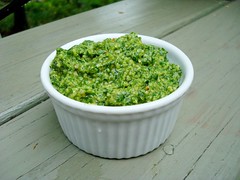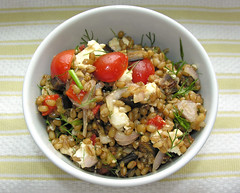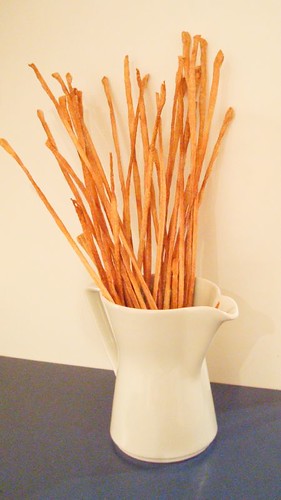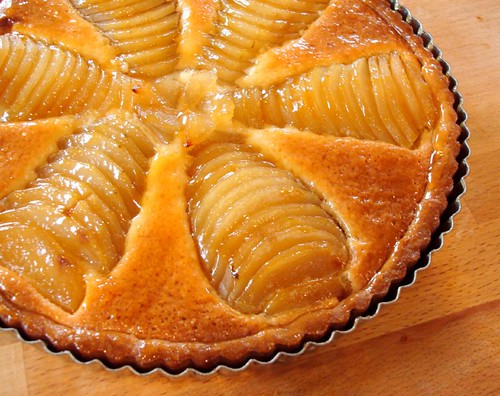 The February 2009 challenge is hosted by Wendy of WMPE's blog and Dharm of Dad ~ Baker & Chef. We have chosen a Chocolate Valentino cake by Chef Wan; a Vanilla Ice Cream recipe from Dharm and a Vanilla Ice Cream recipe from Wendy as the challenge.
The February 2009 challenge is hosted by Wendy of WMPE's blog and Dharm of Dad ~ Baker & Chef. We have chosen a Chocolate Valentino cake by Chef Wan; a Vanilla Ice Cream recipe from Dharm and a Vanilla Ice Cream recipe from Wendy as the challenge.For this month's Daring Bakers challenge we all made chocolate valentino cakes. We were to serve our cake with an ice cream of our choice. I made a buttermilk-vanilla ice cream to go with my cake.
The ice cream was a real experiment for me. I am going to be teaching a class later this year on making ice cream without an ice cream maker and so I experimented with David Lebovitz's method for machine-free frozen treats. It's pretty simple: put your ice cream base in a container. Stick in the freezer and stir vigorously about every half hour until it looks like ice cream. The advantage of this method is that is gives you very dense, almost gelato-like ice cream (and you don't need another appliance in the kitchen). That said, I think I prefer the smoother, churned texture I get from my ice-cream maker. But if I didn't have the equipment on hand, the "freeze and stir" method would be a very good fall back technique to have in your arsenal.
The recipe I developed doesn't contain any eggs: I wanted it to be super fast to pull together. I also scaled the recipe for a small quantity (about 2 cups worth).
Creamy Buttermilk Ice Cream
- 1 cup buttermilk
- 1 cup heavy cream
- 1/2 cup sugar
- pinch salt
- 2 teaspoons vanilla extract
----------------------------------------
This flourless chocolate cake is fairly similar to the Cook's Illustrated version I make. The only material difference in the two recipes is the CI version has you whip the whole eggs until very thick. I made a half-batch of the recipe and baked it in a 6" springform. It makes a very dense, fudgy cake. I think I overbaked mine a tiny bit as it was the tiniest but dry (ice cream can cover that sin pretty well however). To account for the smaller pan, I reduced the oven temp to 350 and the baking time to 20 minutes, but I should have pulled it out at 17 minutes, methinks. The full recipe is reprinted below.
Chocolate Valentino Cake
- 16 ounces (454 grams) of semisweet chocolate, roughly chopped
- ½ cup plus 2 tablespoons (146 grams total) of unsalted butter
- 5 large eggs, separated
While your chocolate butter mixture is cooling, butter your pan and line with a parchment circle then butter the parchment.
Separate the egg yolks from the egg whites and put into two medium/large bowls.
Whip the egg whites in a medium/large grease free bowl until stiff peaks are formed (do not over-whip or the cake will be dry).
With the same beater beat the egg yolks together.
Add the egg yolks to the cooled chocolate.
Fold in 1/3 of the egg whites into the chocolate mixture and follow with remaining 2/3rds. Fold until no white remains without deflating the batter.
Pour batter into prepared pan, the batter should fill the pan 3/4 of the way full, and bake at 375F/190C.
Bake for 25 minutes until an instant read thermometer reads 140F/60C. (Note – If you do not have an instant read thermometer, the top of the cake will look similar to a brownie and a cake tester will appear wet.)
Cool cake on a rack for 10 minutes then unmold.




















